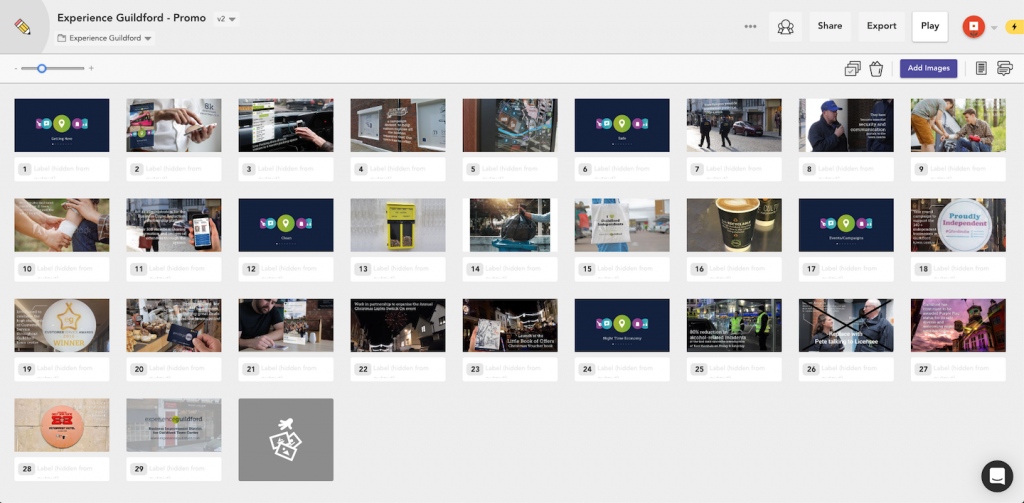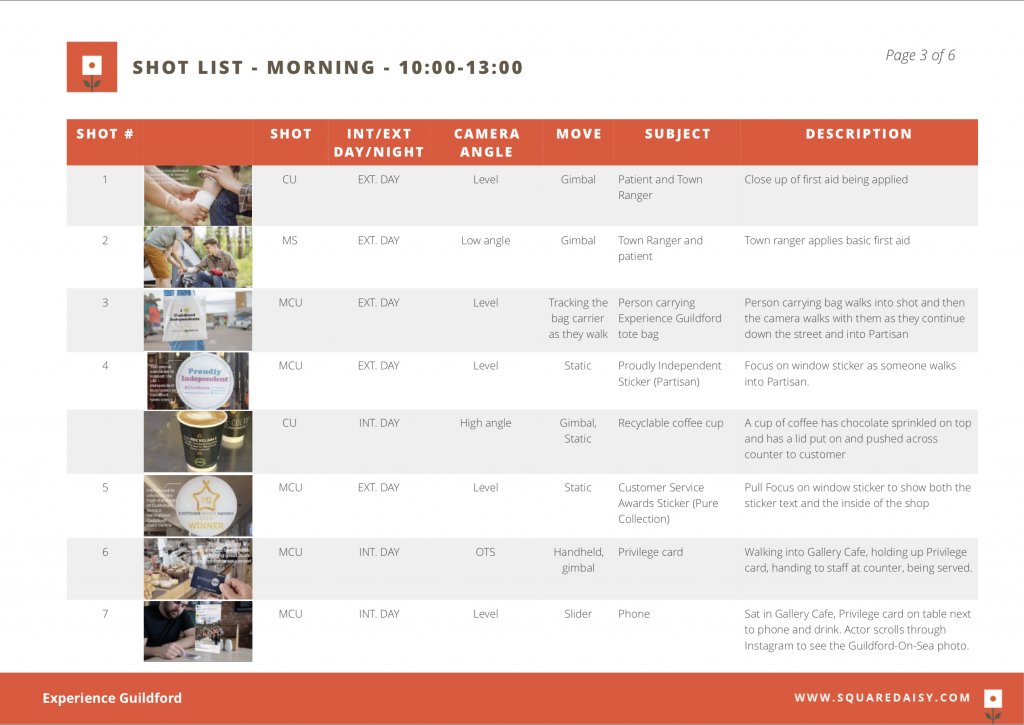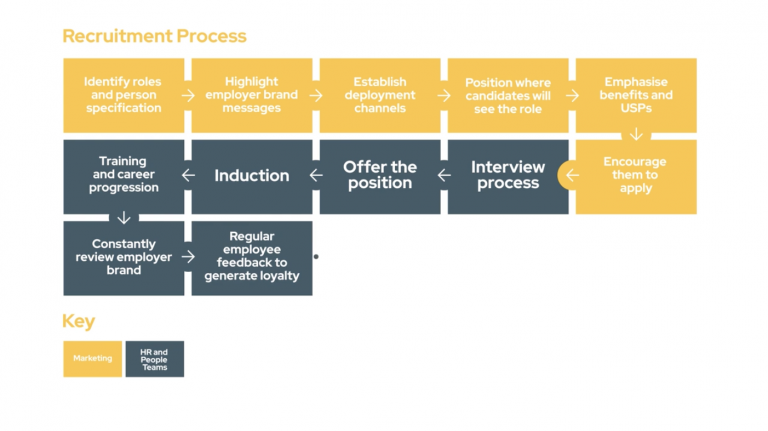“We identified a need for a marketing video that would explain the benefits of a Business Improvement District and highlight some of the key projects and initiatives that we deliver. We wanted this to act as an educational tool for both our member businesses and the general public.”
Olivia Pattullo – Project Manager, Experience Guildford
Our Approach
We wanted the viewer to truly ‘experience’ Guildford through the medium of video, and this really informed our approach. We decided to take the audience into the heart of Guildford town centre with lots of handheld camera and point-of-view cinematography. There’s also lots of aspects of membership that aren’t immediately obvious to the naked eye, so we knew that incorporating on-screen text to reinforce these key messages was really important. And of course we wanted the edit to be exciting to watch, whilst looking amazing!
The Proof is in the Pudding Planning
Genuinely the most important part of any production – especially one of this complexity – is the planning stage. The planning for a video like this includes a production meeting with the client, detailed storyboarding, a thorough shot list and production schedule.
Production Meeting and 1st Class Client Cooperation
The production meeting sets out how we are going to deliver what the client wants to achieve.
We make note of the important things to include, and then discuss how we are going to show them. We also make the client aware of the requirements we might need from our side, such as permission for certain locations, actors and timescales. We nail down a filming date and reverse engineer a project timeline from then to make sure we tick off all the key planning stages.
With a production that involved so many elements; businesses, volunteers, actors and filming locations, we needed an expert on the ground to pool their resources of local knowledge and contacts. Liv from Experience Guildford is an exceptional example of a client pulling their weight to communicate with all the key contributors – anything from suggesting the best location for a shot or persuading a local business to be featured in the video – no task was too much.
Storyboarding

The storyboard is an incredibly important element of planning. It is the first visual representation of the video that the client will see so it is really useful to help them imagine what the video will look like. They can use this stage to flag any concerns, as feedback at this stage will prevent any problems that would be costly and difficult to fix at a later stage.
The storyboard is also incredibly important internally for the planning of the shoot. It structures the narrative and informs the editing process. It defines which shots need to be filmed, who needs to be in them and where they are going to be shot. It influences the framing, taking into consideration the placement of on-screen text. This last point is especially important with regards to the advanced post-production we wanted to implement as camera tracking and rotoscoping are intrinsically linked to the footage captured.
Ultimately, both the client and us knew with 95% certainty what the video would look like before we even got the camera out of the bag.
Shot-list and Production Schedule

Efficiency and time keeping are really important to the smooth running of a location shoot, otherwise project creep, extra costs and mistakes can start to appear. With the crew and all the equipment in one place for a limited time it is essential to plan the day thoroughly.
This comes in the form of a shot-list, and production schedule. The shot list outlines every single shot that is needed to deliver the approved storyboard. It describes the shot type, angle, camera movement, the action, the location and the people involved. We then structure this into an order than makes most sense in the context of the shoot – meaning that we don’t necessarily capture the footage chronologically in the order of the final video. We plan the shots by location, what kit is needed, when the volunteers or actors are available, or what time of day is required.
Building the shot list into a wider production schedule is beneficial for both the client and us so that are we are all on the same page for the day of the shoot. It included key information about crew, logistics, requirements and timings.
The Result
We are definitely taking this opportunity to blow our own trumpets…The final production is something to behold. The smooth handheld camera work really takes the audience on a journey around Guildford through an easily digestible narrative. It brings the viewer right into the video, up and down the pathways and into shops, cafes and pubs. Floating screens show off the Experience Guildford app, and animated inter-titles mimic the app UX design to tie the whole thing together visually. It uses a combination of time-remapping (speeding up and slowing down), motion tracking, camera tracking and rotoscoping to integrate the text elements in an immersive way, without jarring the audience or detracting from the visuals.
It is rare that I have seen a video convey a message so appropriately and effectively. Guildford is presented as a vibrant town offering a warm welcome to visitors of all ages and there is no doubt that the production captures many of the qualities that make the place so special.
Ian Blyth – Board member, Experience Guildford

